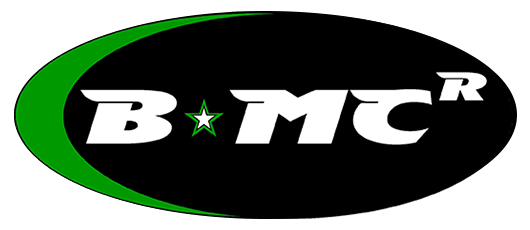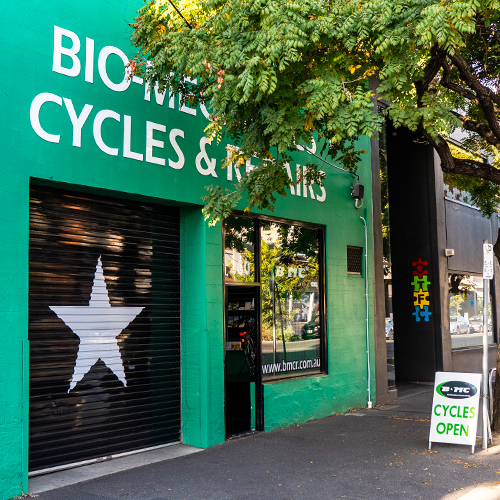How to get home with a broken spoke


Professional tips to get home with a broken spoke
Some sounds are music to a mountain biker’s ears – the swish of tyres on a perfect berm, that ticking silence when you’re airborne over a jump – but there are others which can ruin your ride, such as that metallic ‘ping!’ that heralds a mechanical failure.
You stop and check your wheels. Yup, one spoke is hanging loose and now your wheel isn’t sitting straight in the frame, either.
But don’t phone for a ride just yet. With a few simple steps, we’re going to show you how to get home with a broken spoke. You’ll be able to quickly diagnose the issue, de-tension the rim, straighten the wheel if need be, and get rolling again.
Caveat: this post assumes some basic bike knowledge, including how to use a spoke key. If this isn’t you (or anyone you’re riding with), your best bet will be to hitch a lift home. However, if you’re feeling adventurous, why not give it a go? You never know – you may learn a new skill, if even out of necessity.
Let’s get into it.

How to get home with a broken spoke
There's only one tool that you need to fix a broken spoke when you’re out on the trail: a spoke key.
The great thing about a spoke key is that it’s small and light, so you can tuck one in your saddle roll and never think about it again until you need it.
Add it to your list of on-the-bike essentials.
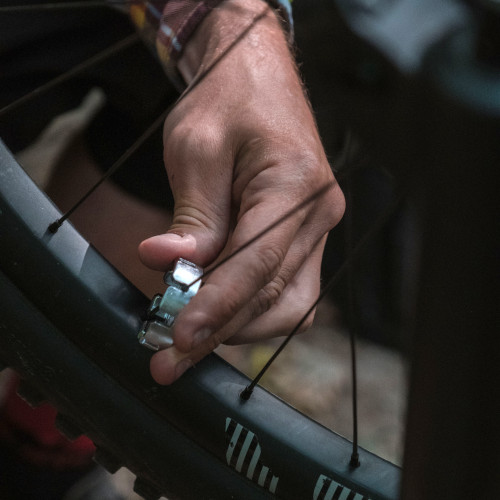
What’s the first thing to do?
Firstly, you need to work out what caused the spoke to break.
It will usually be one of two things:
- metal fatigue, or
- catastrophic failure.
Metal fatigue is just regular wear and tear. Everything on a bike has a shelf life, and riding puts stress through some parts of the bike more than others – your wheels being one of them. This is when broken spokes happen, assuming you haven’t had an accident or impact.
In contrast, catastrophic failure is due to an external force (e.g. stick, rock, badly adjusted rear derailleur) going into the wheel. You’ll usually know when this has happened, as there’s often damage to other components as well. Plus most people tend to know when there’s a branch sticking out of their bike.

I have one broken spoke – how do I get rolling?
If the spoke has only broken from metal fatigue, the good news is that it’s pretty easy to get moving again.
Get your spoke key. Now use it to loosen the spokes on either side of the broken one. You only need a turn or two – don’t go crazy and start unwinding everything.
After you’ve done this, you might notice that the wheel now has a bit of an egg in it. This is because you’ve released tension in one part of the rim. Wheels run true/straight when all of the spokes are tensioned equally, so as soon as this gets out of whack, it affects the rim shape.
However, the egg is OK in this case. As long as your wheel is straight enough to spin and miss the rear stays/fork legs/brake pads, you should be able to ride home. (Be sensible, though; this is not the time for drop-offs.)
If the broken spoke is flapping loose, wind it firmly around the next spoke so it doesn’t get in the way and cause any more damage. Besides, if you leave it loose, it makes a really annoying sound when you’re limping your bike back to the car.
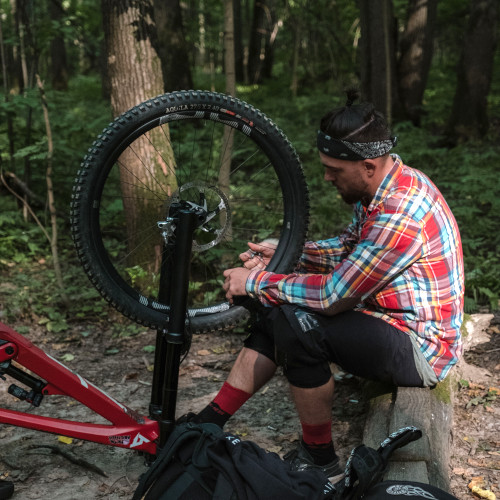
Do I have to take the wheel out of the bike to loosen off the spokes?
Nope. You should be able to get this sorted out without having to remove anything.
Turning the bike upside down to work on it makes things a lot easier, though.
Wait - I can’t see the spoke nipple as it’s inside the rim
If your wheel has hidden/internal nipples, then this is not your lucky day. Internal nipples are a total pain to work on, and beyond a simple trail-side fix or repair.
Make a call to get picked up, or start walking. (Sorry.)
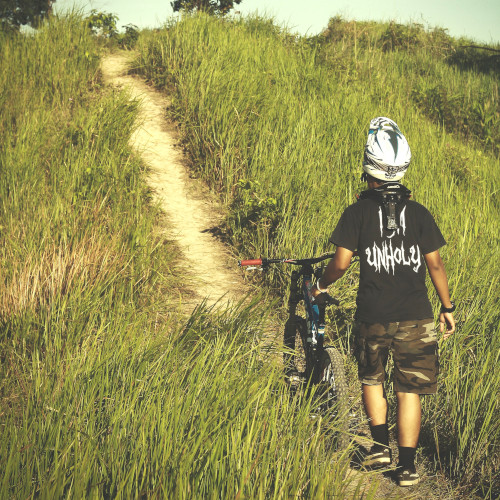
I’ve got more than one broken spoke – what do I do?
This is going to be harder to fix, unfortunately.
If the wheel has multiple broken spokes, things should look pretty messy, and your ride is probably over for today, unfortunately. Hopefully you can get back to your car, or have someone come and pick you up.
But! If you don’t have a back-up plan, don’t fret. Let’s see what we can do to get your bike moving again.
Were the broken spokes caused by something going into the wheel, like a stick or rock?
If so, use the same method as for the single broken spoke: loosen the spokes either side of any broken spoke until the rim is straight enough to get you back home.
The same note about wrapping a broken spoke around an unbroken one applies, but this may not be possible, depending on the extent of the damage.
Were the broken spokes caused by a crash or accident instead?
A crash or accident often means that the wheel has suffered a sideways force, and now looks like a potato chip. This can be because the spoke tension is all over the place – there will be several areas where the spokes have no tension at all, for example – or because the rim is bent, usually from an impact (as sticks/rocks/rear derailleurs usually don’t bend a rim).
The single-broken-spoke method isn’t going to fix this problem. We must go deeper.
You’re going to have to do some panel-beating.
Panel-beating a wheel generally takes a lot of skill and patience. However, if you’re stuck in the middle of nowhere, you’re going to have to give it a go. After all, what choice do you have?
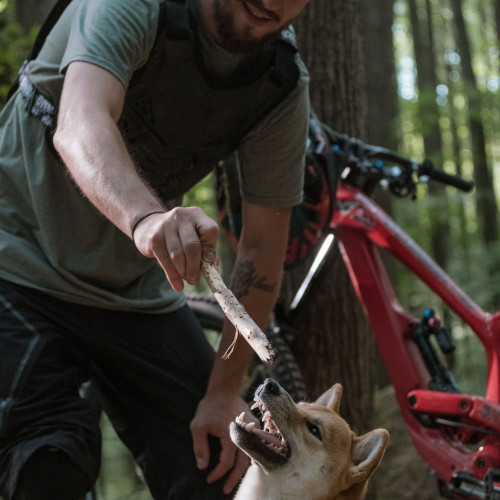
How to straighten a wheel when you’re out on a bike ride
Take your wheel out of the bike.
Next, loosen all of the spokes with one full turn of the spoke key.
This releases some of the stress off the rim. (Poor thing; it’s been through a lot today.)
Now you need to find the high spots – the areas where the rim is most bent. Hold the wheel by the axle and give it a spin to see where wobbles are happening. High spots are usually directly opposite each other.
Once you’ve located the high spots, you’re going to need to force the rim straight again. Look for a stump/fence post/large rock which can take some weight, and that you can lean the wheel against.
We’re going to be reversing the impact. * cracks knuckles *
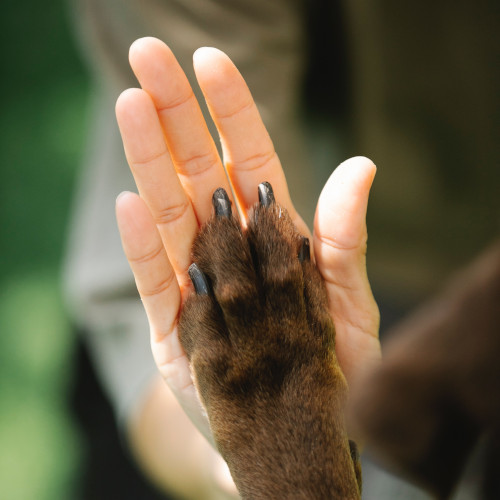
Put one low spot of the wheel against the stump/post/rock and the other on the ground, so they’re facing away from you. Now push hard against the high spots.
You’re aiming to actually go past the original "straight" point in order to balance the wheel back up.
Pick the wheel up and spin it to check how you’re progressing. If it’s not quite there yet (which it probably won’t be), put it back down and repeat the process.
Keep lining up the low spots and pushing on the high spots, then checking your progress by spinning the wheel.
Got it relatively straight? Great! When you're happy enough with how it looks, re-tension the spokes, refit the wheel and you’ll be on your way.
It won’t be perfect, but it should hopefully be good enough to get you home.
Don’t forget to put your spoke key back in your bag, and give yourself a pat on the back. You did it!

Spoke-repair-related FAQs
Do I need to take the tyre off to straighten the wheel?
It’s probably better if you can as it will make it much easier to work with. However, if you’re running tubeless and don’t have spare sealant (plus a way to reseat the tyre), you may just have to leave it on there and do what you can.
Can I panel-beat a carbon rim?
No, and please don't try.
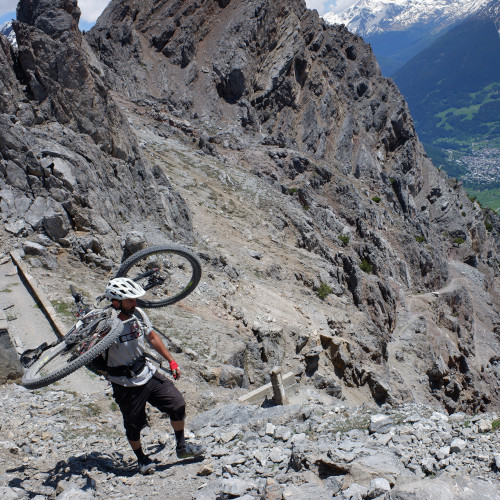
Are broken spokes covered under warranty?
If the wheel is still within its manufacturer’s warranty period, maybe. However, if you’ve had an impact or accident, then forget it.
Can I ride my bike with one spoke missing?
You can. Whether the spoke is broken, wrapped around another one or completely missing, the situation is the same – it’s not doing its job and supporting the rim. However, if you’ve followed the steps for getting the rim as straight as possible, it will be perfectly safe to ride your bike home. (Assuming your home isn’t hours and hours away.)
A note of caution
These fixes are meant to be temporary.
Don’t keep riding your wheel in this condition for any longer than you need to. Get the missing/damaged spoke replaced as soon as you can to avoid any further damage.

You're ready to roll!
So there’s your quick guide to trail-side repairs when a broken spoke is threatening to derail a day out on the trails. All you have to do is find out what caused it, have a play with spoke tensions, and maybe do a bit of strong-arming, and you can get home again. Hopefully these tips will save you an SOS call or at least a long walk back.
One final step
Once you’re home, book the wheel/bike in so we can make sure there are no hidden cracks and sort out any additional damage. You’ve done enough wrenching for the day; let us look after the rest.
